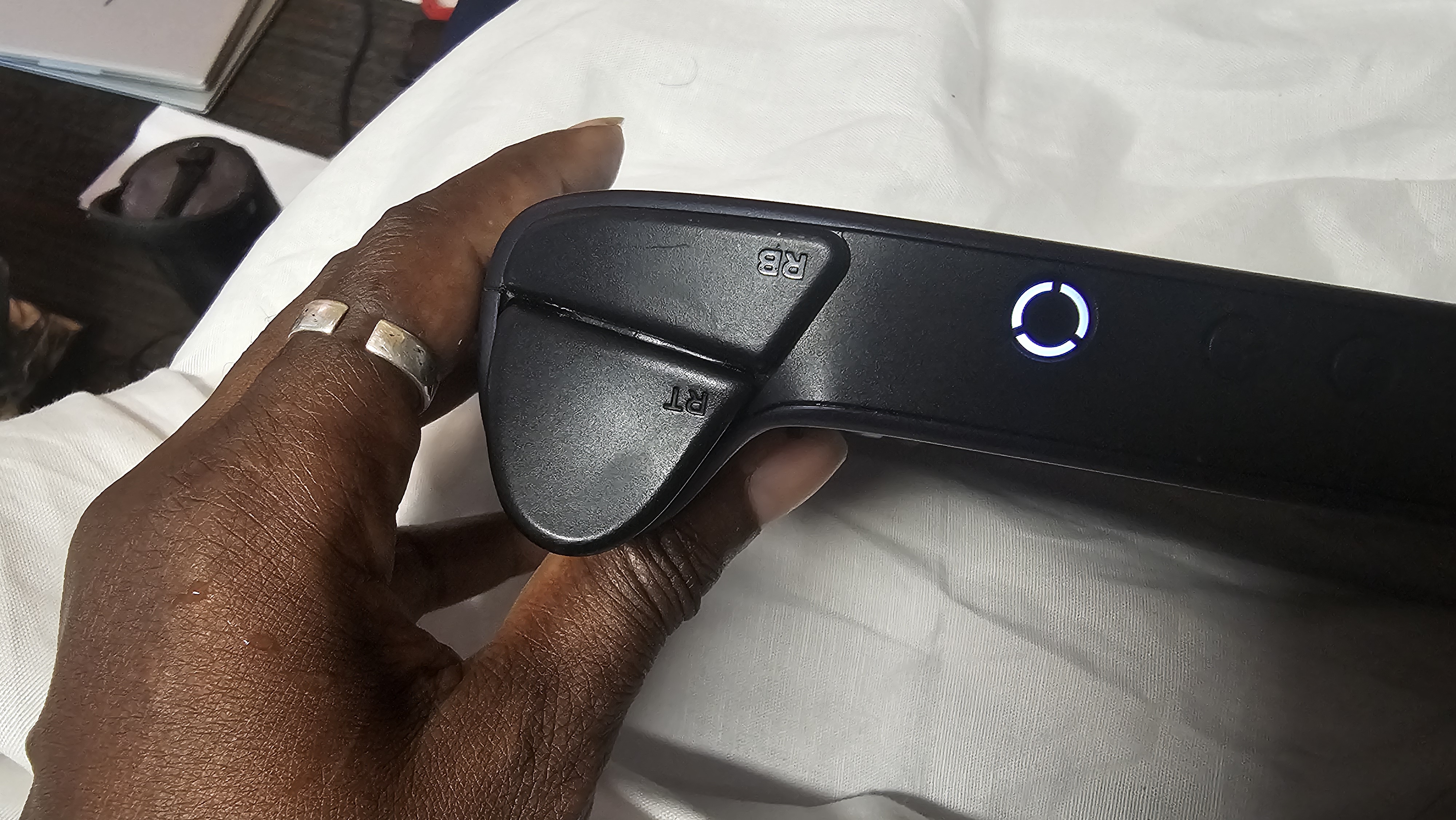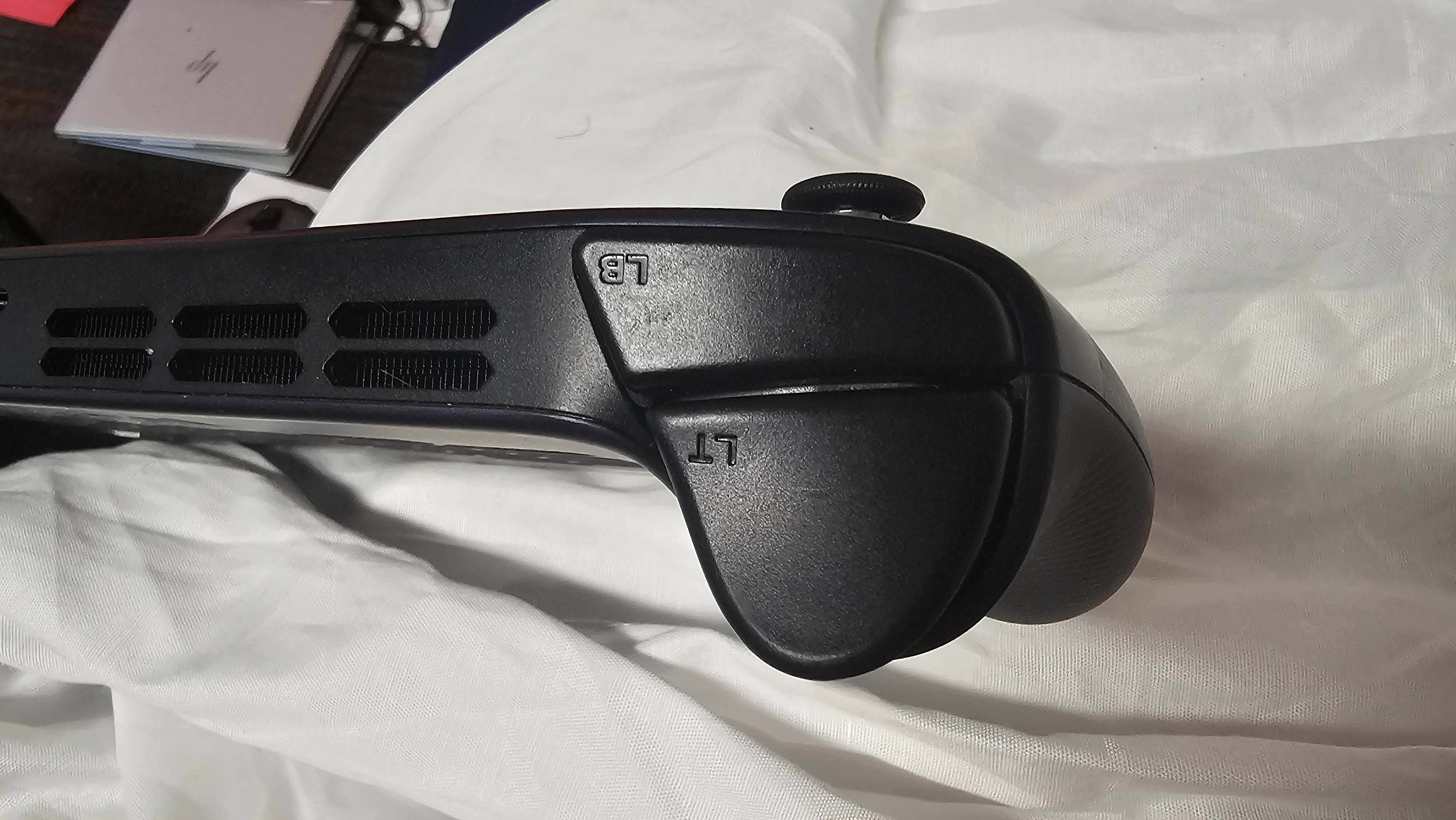Why you can trust TechRadar
We spend hours testing every product or service we review, so you can be sure you’re buying the best. Find out more about how we test.
Lenovo Legion Go S (SteamOS): Two-minute review
Lighter, cheaper, and more portable than the OG Lenovo Legion Go, the Lenovo Legion Go S (SteamOS) has a lot going for it.
First is its starting $649.99 / £699 / $1,329 price tag, which makes it much cheaper than most of the best budget gaming laptops on the market. And weighing just under two pounds, the Legion Go S is substantially lighter, too.
The result is a compact beauty that can play most of the games in your Steam library, although you might have to adjust a few settings.
The not-so-secret sauce in the Go S is the AMD Ryzen Z2 Go, or AMD Ryzen Z1 Extreme if you’re willing to pay a bit more for better performance. In my case, the Z2 Go brings solid performance to a remarkably compact system.
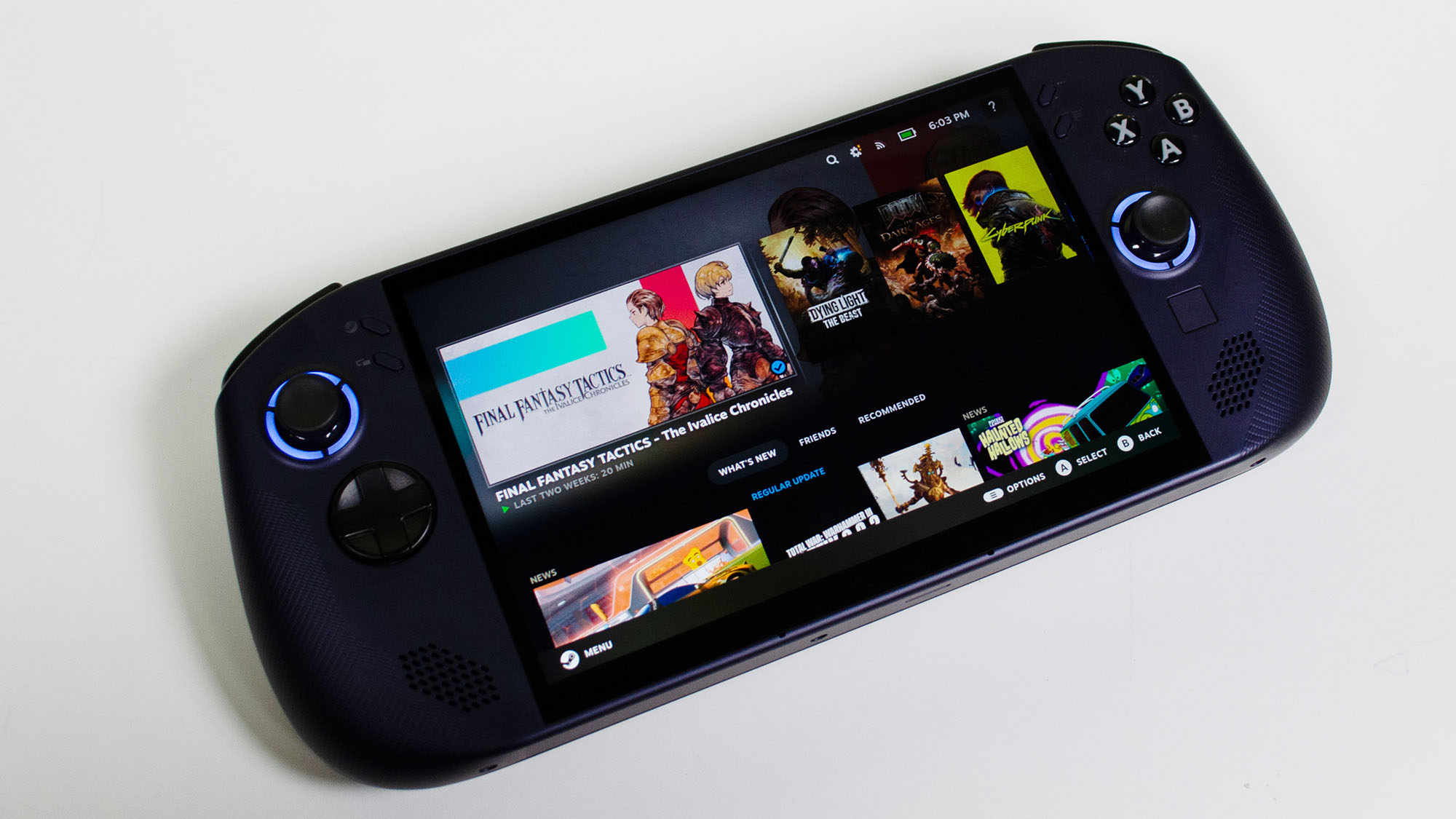
Can you play some of the more demanding games out there, like Cyberpunk 2077? Not really, unless you’re willing to make some serious compromises on graphics quality and resolution, but there are plenty of AAA titles that will run beautifully on a device that fits nicely in the palms of your hands.
There are some caveats to consider. The Go S suffers from a short battery life, just like the best gaming laptops, and it has a slightly smaller display with a lower resolution than the original Lenovo Legion Go. And unlike its chunkier brethren, the joysticks on the Legion Go S aren’t detachable.
But the biggest concession on the SteamOS version of the handheld is the platform. While there is a version of the Legion Go S with Windows 11 installed, almost everyone using the SteamOS version is going to use Valve’s Steam storefront exclusively.
Sure, you could find a way to dual-boot another OS or jury rig a way to get GOG or the Epic Games Store installed on SteamOS, but it’s going to be a bit of a hassle, especially for more casual users. For the hard-core Steam fans like me, though, it’s not just a non-issue; it’s part of the Lenovo Legion Go S’s appeal.
Lenovo Legion Go S (SteamOS): Price and availability
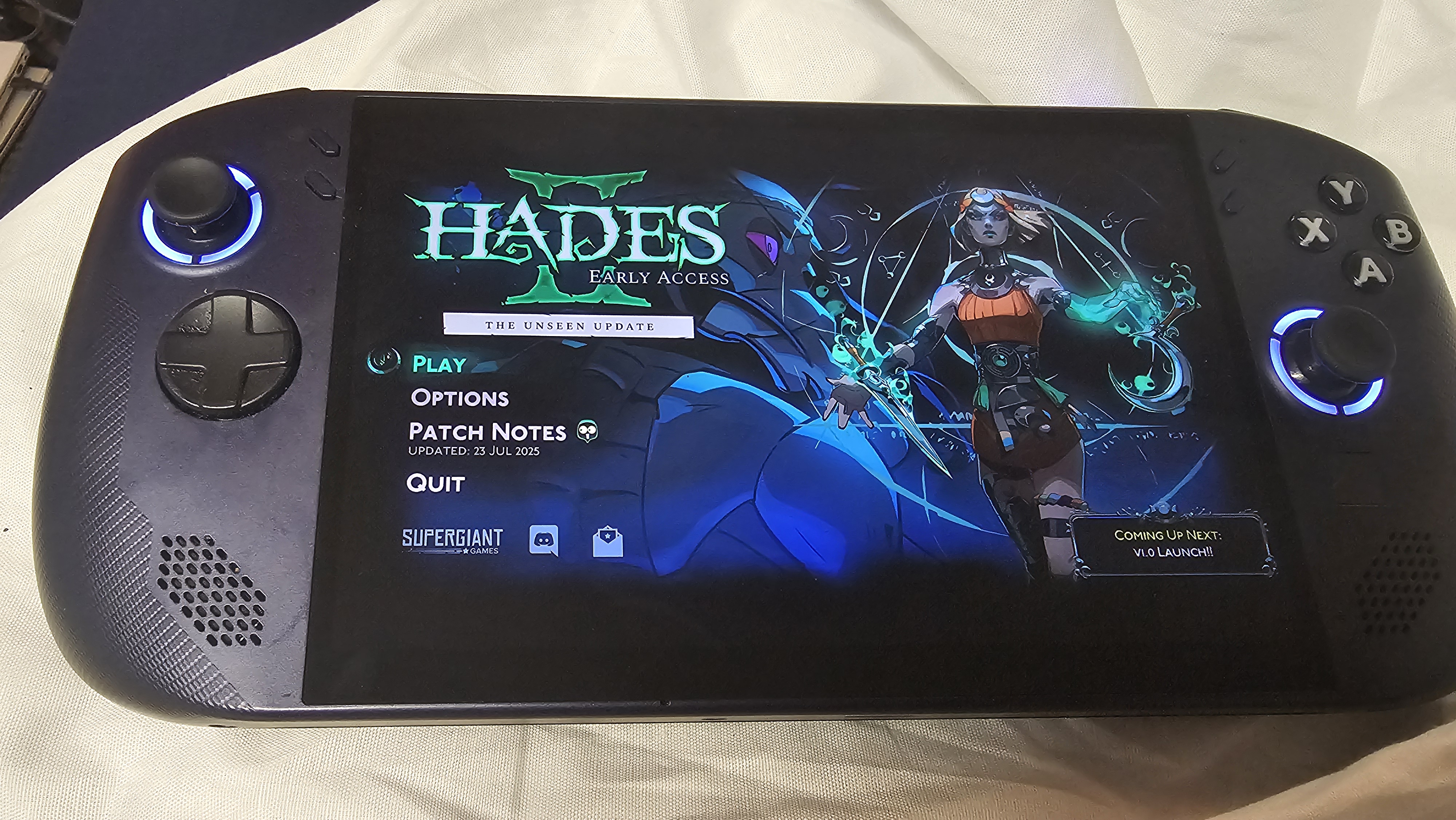
- How much does it cost? Starting at $649.99 / £699 / $1,329
- When is it available? It is available now
- Where can you get it? It is available in the US, UK, and Australia
The base model of the Legion Go S is available now in the US, UK, and Australia, starting at $649.99 / £699 / $1,329. It comes with the new AMD Ryzen Z2 Go SoC, 16GB RAM, a 512TB SSD, and an 8-inch, 120Hz IPS touchscreen.
There is also the more powerful Z1 Extreme configuration that sells for $829.99 / £699 / AU$1,599. It has more RAM and storage, and it sports the more powerful AMD Ryzen Z1 Extreme SoC that powered the original Legion Go.
This is a good bit more expensive than the base Steam Deck, but the slightly more powerful Z2 Go processor in the Legion Go S will get you 50% more RDNA 2 compute units to help with performance.
Lenovo Legion Go S (SteamOS): Specs
| Header Cell – Column 0 |
Lenovo Legion Go S (Steam OS) base configuration |
Lenovo Legion Go S (Steam OS) max configuration |
|---|---|---|
|
CPU |
AMD Ryzen Z2 Go |
AMD Ryzen Z1 Extreme |
|
GPU |
Integrated AMD Radeon Graphics (12 RDNA 2 GPU Cores) |
Integrated AMD Radeon Graphics (12 AMD RDNA 3 Cores) |
|
Display |
8-inch WQXGA (1920 x 1200p) LCD, 16:10, 120Hz, 500 nits, 97% DCI-P3 |
8-inch WQXGA (1920 x 1200p) LCD, 16:10, 120Hz, 500 nits, 97% DCI-P3 |
|
Memory |
16GB LPDDR5X-6400 |
32GB LPDDR5X-6400 |
|
Storage |
512GB PCIe 4.0 SSD (2242, 2280 compatible) |
1TB PCIe 4.0 SSD (2242, 2280 compatible) |
|
Battery |
55.5WHr |
55.5WHr |
|
Connectivity |
WiFi 6E, Bluetooth 5.3 |
WiFi 6E, Bluetooth 5.3 |
|
Ports |
2 x USB4, 1 x 3.5mm combo jack, 1 x microSD card |
2 x USB4, 1 x 3.5mm combo jack, 1 x microSD card |
|
Dimensions (W x H x D) |
11.77 x 5.02 x 0.88 ins | 299 x 127.55 x 22.6mm |
11.77 x 5.02 x 0.88 ins | 299 x 127.55 x 22.6mm |
|
Weight |
1.63 lbs | 740g |
1.63 lbs | 740g |
Lenovo Legion Go S (SteamOS): Design
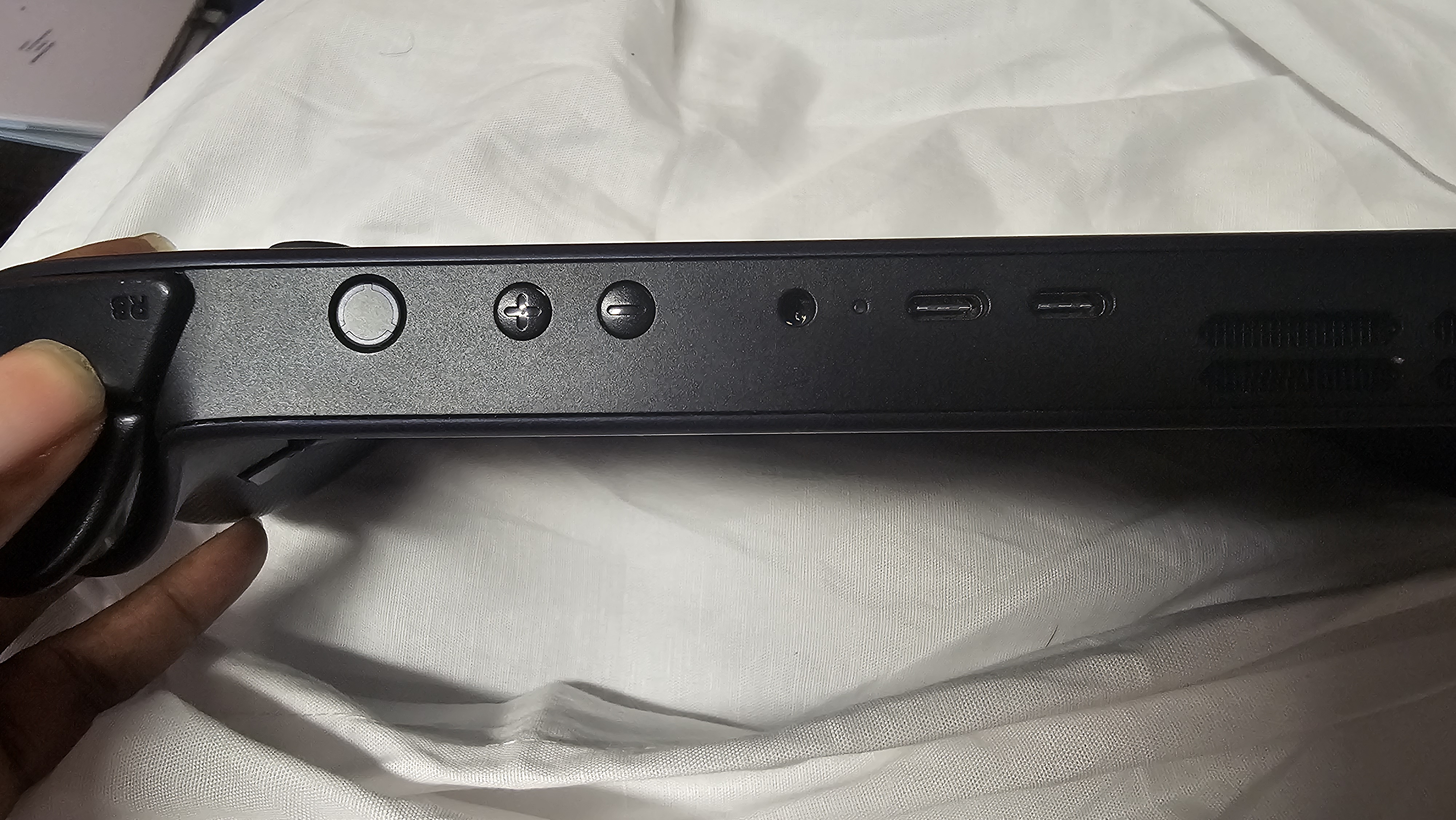
- Excellent hand feel with ergonomic grips; sturdy build
- Hall-effect sticks, responsive triggers, handy top/bottom port layout
- Louder fans than I’d like during long, heavy sessions
Personally, I’m a big fan of the original Legion Go, bulky as it is. But the Legion Go S (SteamOS) has its own unique appeal, starting with the color.
The midnight blue chassis is a nice change from the black and white we’ve been getting lately from PC gaming handhelds.
The hard plastic casing fits comfortably in my hands with textured hand grips as a bonus. It’s not fingerprint proof, but it is resistant, holding off most smudging until I get my hands in a batch of freshly popped popcorn with truffle oil. Then all bets were off.
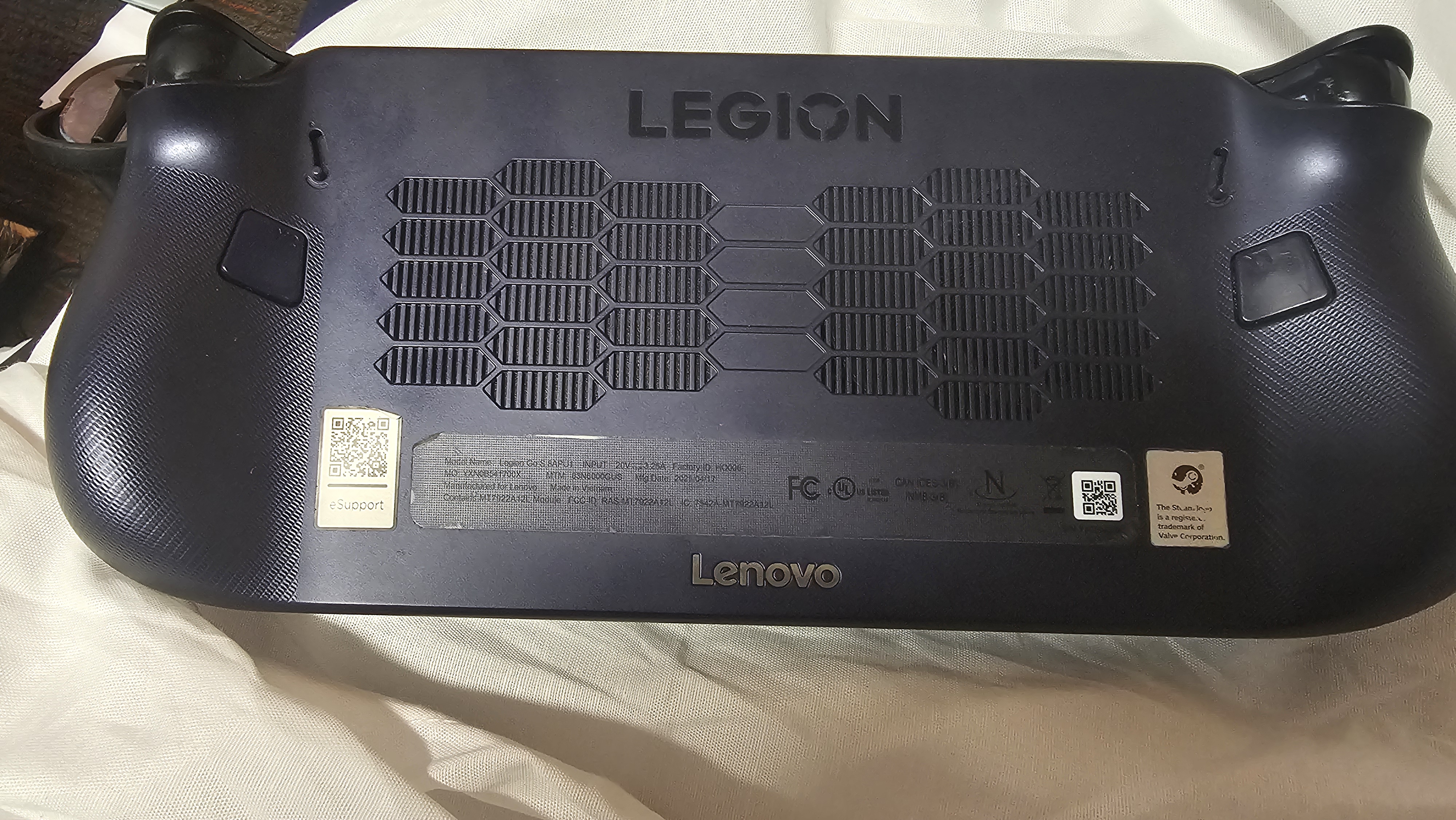
Similar to the Windows 11 version of the Legion Go S, the controllers don’t detach, and there’s no kickstand like on the Legion Go. It’s a shame, but the Go S is noticeably lighter than the Legion Go, weighing in at only 1.63 pounds compared to the latter’s 1.88 pounds, with controllers, so it’s not that much of an issue.
The asymmetrical analog anti-drift joysticks are sturdy and provide accurate input, and I especially appreciate that they don’t detach as easily as the Go’s joysticks.
The D-Pad is fine, but it’s a little too stiff to deliver the precision needed to input quarter or half-circle inputs for fighting games. However, the buttons, shoulder, and rear bumpers deliver firm feedback with a nice, gentle click. A tiny square under the right joystick acts as one of the tiniest touchpads I’ve ever seen.
Despite not being OLED, the 8-inch 2560 x 1600p WUXGA display on the Legion Go S is absolutely stunning.
The near technicolor vibrance of Hades II was a feast for the eyes as I threw out barrages of attacks against seemingly endless waves of enemies.
Cuphead and its 1930s-style animations also looked lovely when I wasn’t cursing the screen out after yet another defeat. In both cases, the display’s 120Hz refresh rate ensured smooth rendering without any noticeable latency, which in games like these can make all the difference.
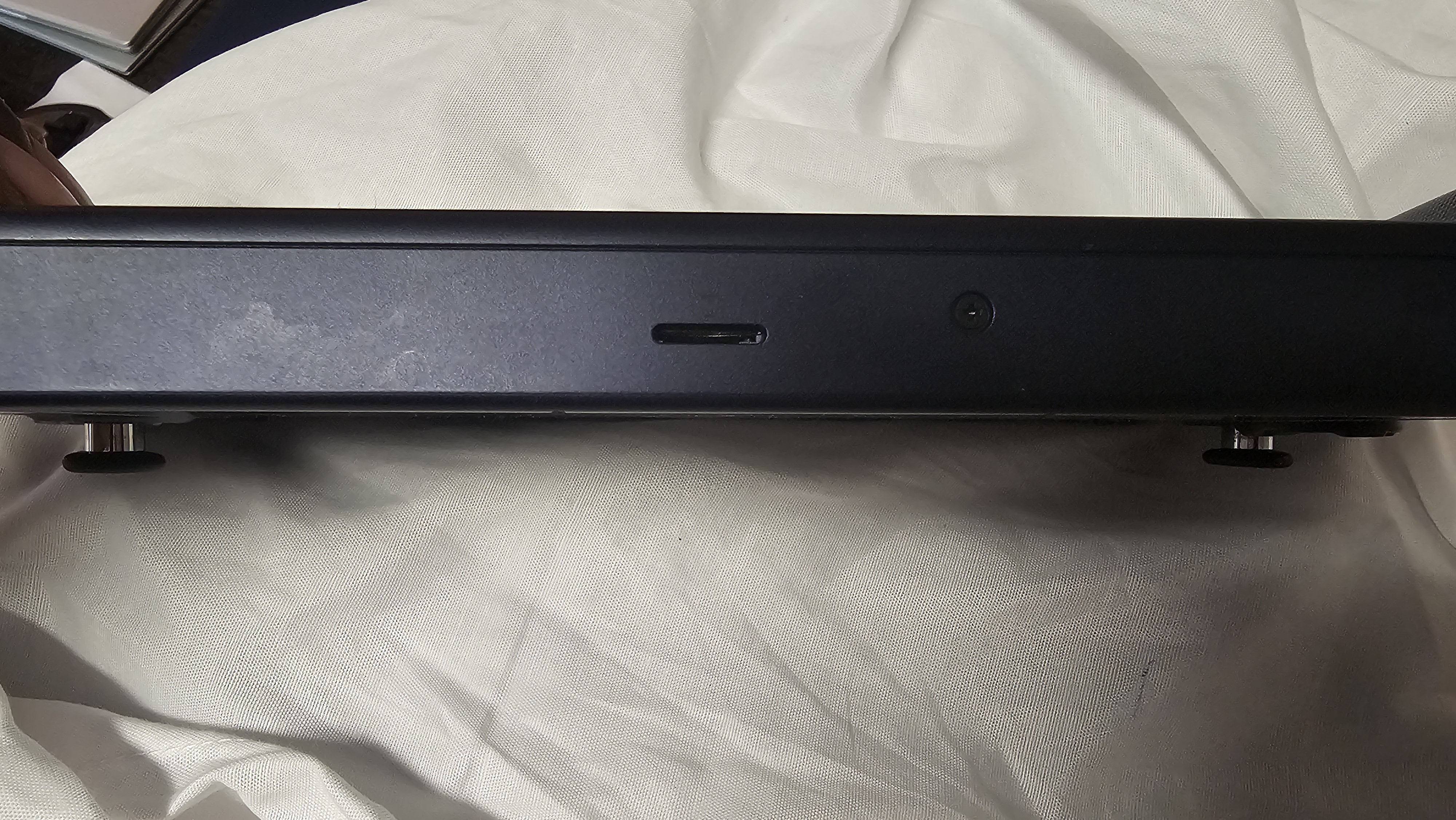
In addition to the Steam button that summons a sidebar with your usual tabs (Home, Library, Store, etc), you also have a Quick Access button, which gives you a sidebar where you can toggle performance profiles and settings such as brightness, audio, and Wi-fi. It’s a seamless way to quickly interact with key features without having to completely exit your game.
Lenovo Legion Go S (SteamOS): Performance
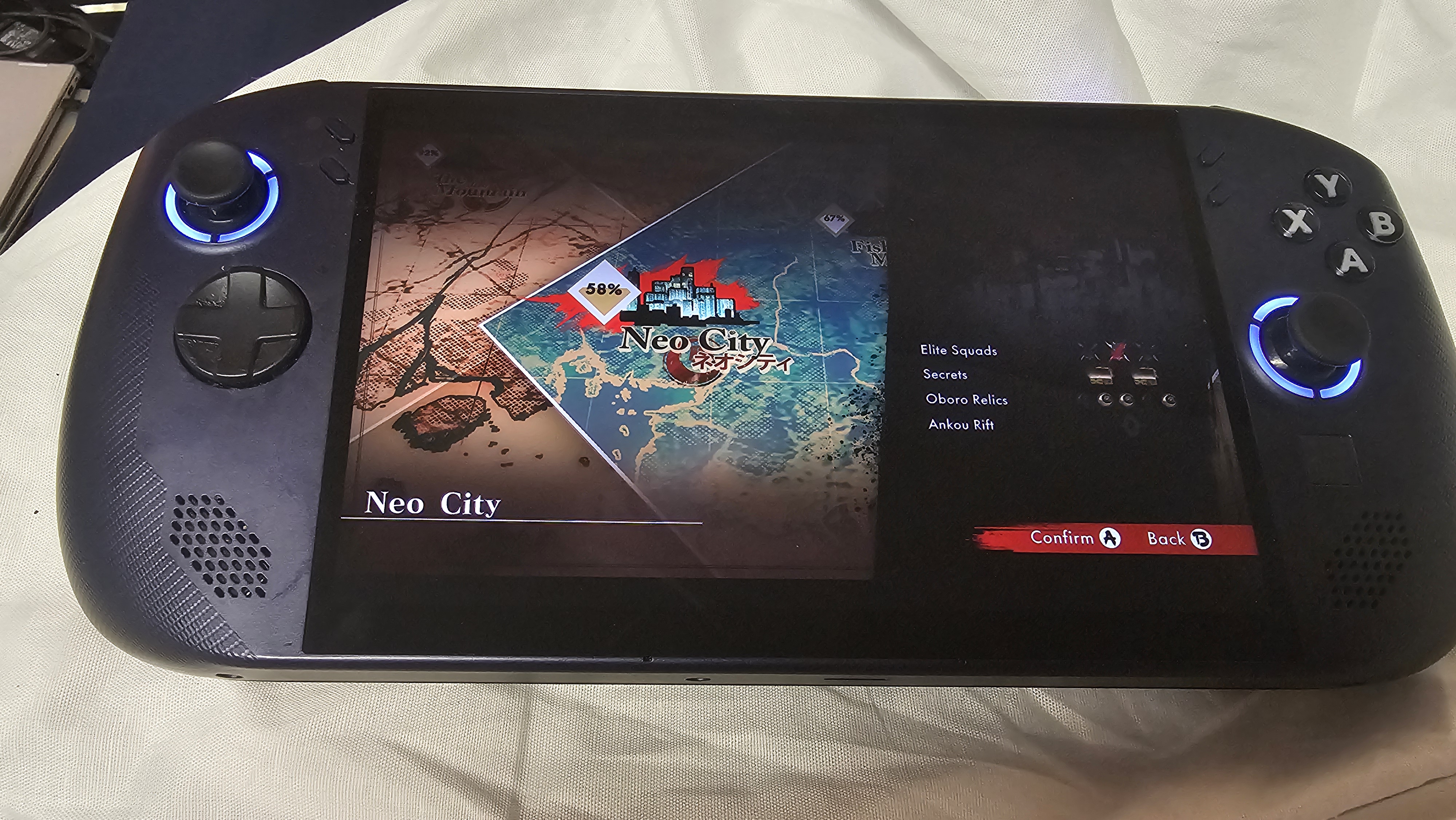
- The Z2 Go is more than enough for casual or less-demanding AAA games, but visually robust titles struggle
- Surprisingly good audio quality
- Controls are responsive and comfortable for long sessions
Lenovo Legion Go S (SteamOS) benchmarks
Here is how the Lenovo Legion Go S (SteamOS) performed in our suite of benchmark tests:
Assassin’s Creed Mirage (Highest, 720p): 32 fps; (Highest, 1200p): 21 fps
Black Myth: Wukong (1200p, Medium): 19 fps; (1200p, Cinematic): 12 fps; (720p, Cinematic): 17 fps; (720p, Medium): 39 fps
Cyberpunk 2077 (Ultra preset, 1200p): 3 fps; (720p, Ultra perset): 6 fps
Dirt 5 (Very High, 1200p): 20 fps; (Medium, 720p): 50 fps
Doom: The Dark Ages (Handheld preset, 1080p, FSR Balanced): 37 fps
Shadow of the Tomb Raider (Highest, 1200p): 16 fps; (Highest, 720p): 30 fps
It’s one thing to play Cuphead or Hades II on a PC handheld, but it’s quite another to play the likes of Cyberpunk 2077, God of War, or Baldur’s Gate III.
And yet, there I was, dying for the umpteenth time as I worked my way through Black Myth: Wukong. Thanks to the handheld’s Z2 Go processor, the game played smoothly on lower settings, consistently reaching frame rates approaching 40 fps at 720p.
I also tried playing the game on Cinematic, and that didn’t work nearly as well. At the highest performance setting at 720p, the game really chugged along at an unplayable 17 fps.
Games such as Baldur’s Gate 3, Hades II, and Hollow Knight, however, ran smoothly with maxed-out settings, letting me quickly immerse myself in the gameplay.
While not as captivating as the original Go’s QHD panel, the display’s colors are vibrant, and details are crisp. This is especially true on Hades II, a technicolor beauty of mythic proportions.
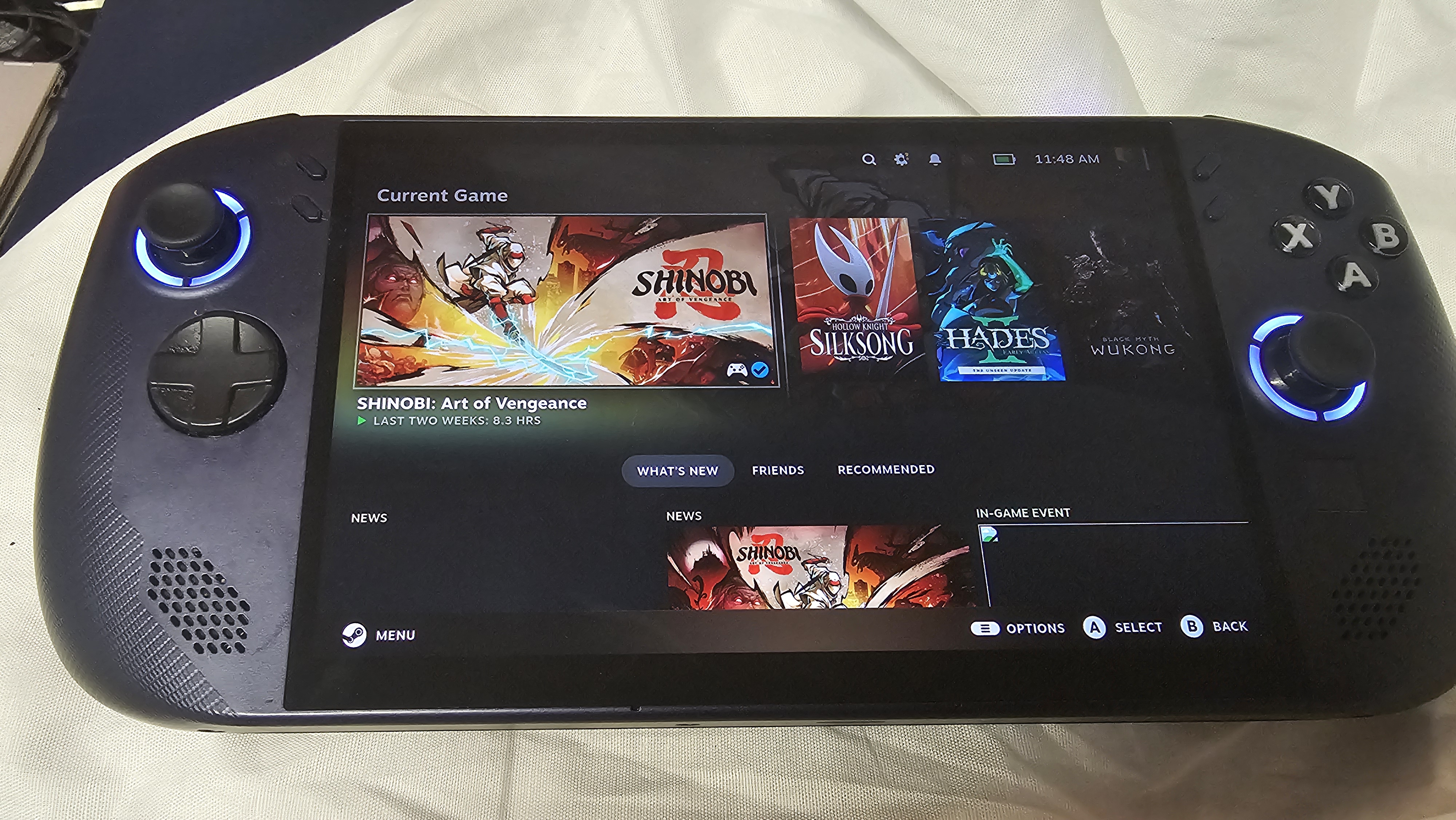
One thing the Legion Go S has in common with its bigger brother is the audio. After weeks of playing this thing, I’m still surprised at how loud the Go S actually gets.
And while it can’t compete with the best gaming headsets, more often than not, I found myself vibing to the soundtrack of whatever game I was playing. In-game dialogue is crisp, while sound effects like explosions have some weight behind them. And on instrumentals, particularly string instruments like violins, there wasn’t any distortion.
I don’t know if it’s just because the Legion Go S is lighter, but the controls felt much better than on the original Legion Go, with my thumbs nestled comfortably into the concave seat of the analog sticks.
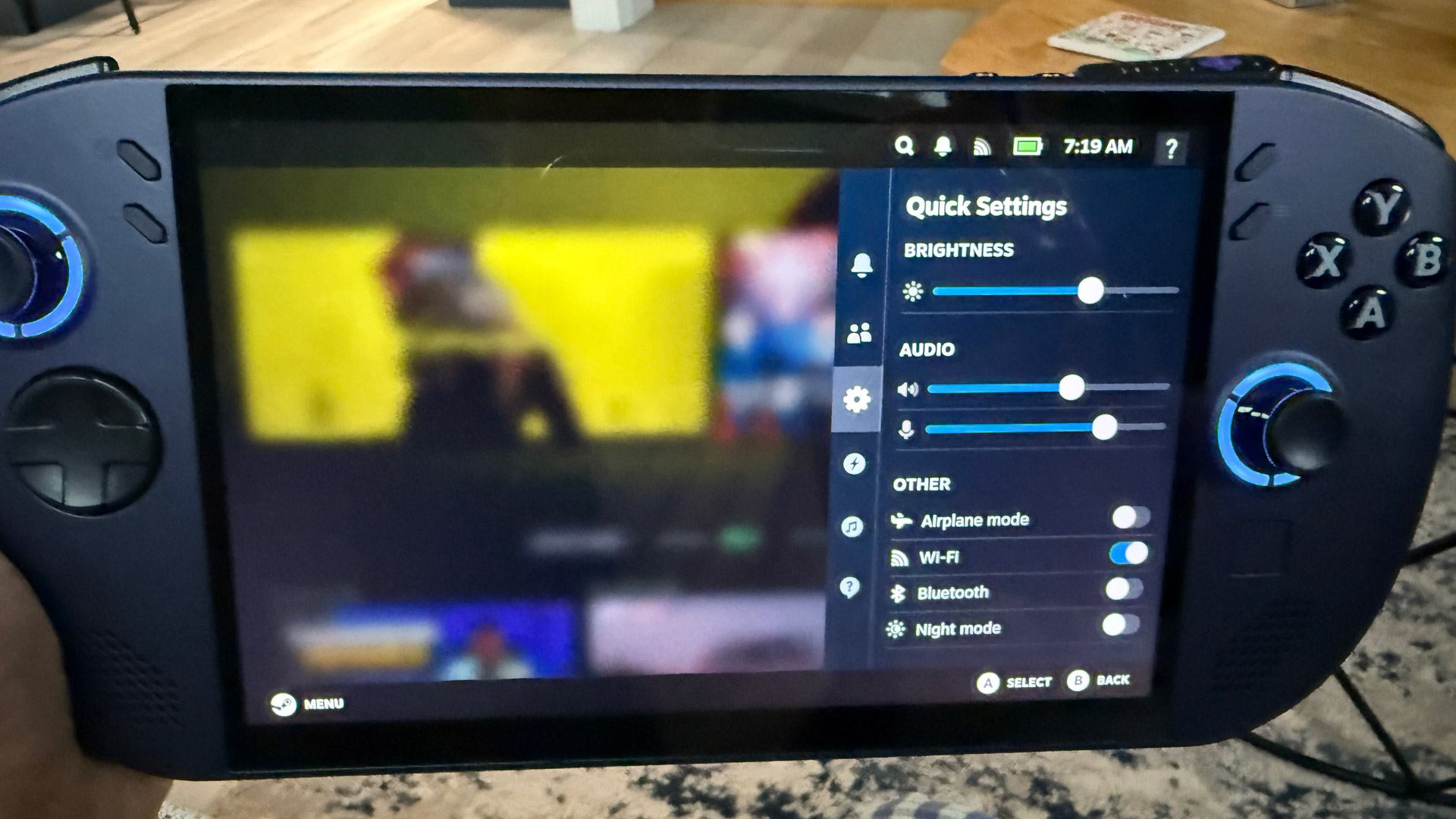
The bumpers and triggers depressed with a firm click, as did the buttons, and using the D-Pad during Black Myth: Wukong to switch stances was a comfortable, fluid experience.
In order to keep the Go S from overheating, Lenovo outfitted the device with several preset Thermal Modes. These set an appropriate fan speed for a corresponding performance level, and while fan noise is negligible on the Quiet or Balanced settings, Performance is a whole other story. There’s also a separate option to optimize fan speeds to make things simpler.
As for thermals, when I wasn’t pushing the Legion Go S too hard, the high-contact touch points like the D-Pad, X, Y, A, B buttons, underside, display, etc., never got especially hot, though things got noticeably warmer during more intense sessions. It never felt uncomfortable, though, even during extended play.
Lenovo Legion Go S (SteamOS): Battery life
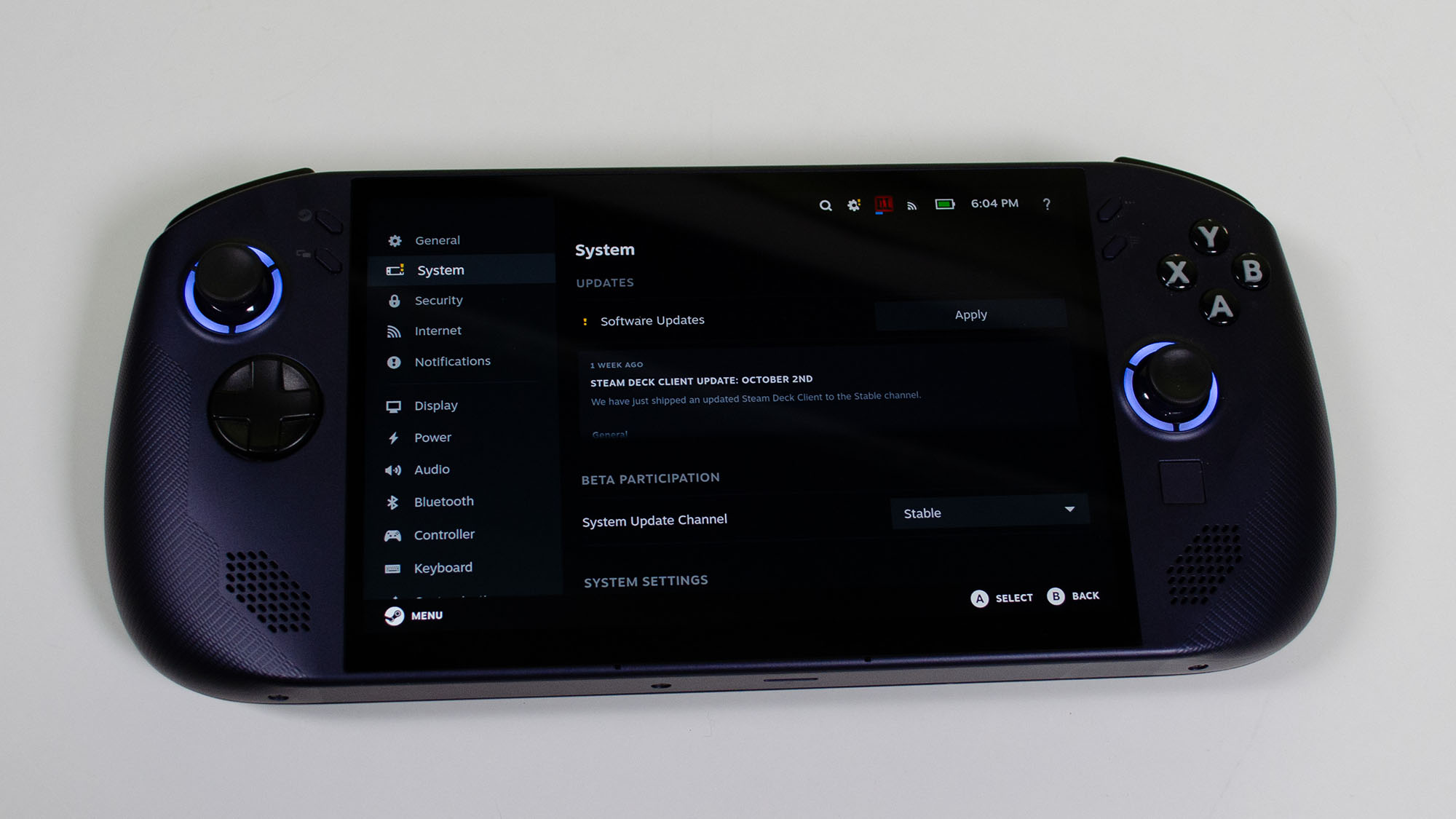
Since the Legion Go S is basically a handheld gaming laptop, don’t expect it to last as long as a Nintendo Switch 2.
During my gameplay testing, the Legion would typically last about 2 hours and 30 minutes on Balanced settings before it shut down, though if you do utilize the Legion Go S’s SteamOS desktop for non-gaming tasks, I was able to stretch this out to about 8 hours and 30 minutes, but no one is going to use the Legion Go S for that kind of thing regularly enough to matter.
Overall, then, the Legion Go S is more than good enough for a work commute, but if you’ve got a long flight or train ride, you’ll definitely want to keep a charger nearby.
Should you buy the Lenovo Legion Go S (SteamOS)?
|
Category |
Rating |
|
|---|---|---|
|
Value |
The Legion Go is one of the more affordable PC gaming handhelds on the market. And outside of a slightly smaller display and a less powerful processor, you’re not losing too much on this SteamOS device. |
4 / 5 |
|
Specs |
With options for both the AMD Ryzen Z1 Extreme and Z2 Go, as well as up to 32GB RAM and 1TB storage, this is a well-specced handheld, especially for the price. |
4 / 5 |
|
Design |
While it’s not the lightest PC handheld on the market, it’s definitely lighter than the original Legion Go. It makes holding the Legion Go S much more comfortable over longer gaming sessions, so while some might miss the kickstand and detachable joysticks, most gamers will call it a fair trade. |
4 / 5 |
|
Performance |
Can you play every GPU-taxing opus on the Legion Go S’s AMD Z2 Go chip? No, but you can play most of what you have in your Steam library at solid frame rates with a few resolution adjustments. Honestly, you’d be surprised at just how many games are handheld compatible these days. |
3 / 5 |
|
Battery Life |
The Legion Go S shares one fatal flaw with its gaming laptop brethren: its blink-and-you-miss-it battery life. At about two and a hald hours while gaming, it’s fine for a work commute, but any longer and you’ll need to pack a charger. |
2 / 5 |
|
Final score |
The Lenovo Legion Go S (SteamOS) is a good choice for SteamOS diehards. However, if you want something with more oomph, make sure you spend a bit more to get the Z1 Extreme configuration, or look at more powerful gaming PCs, handheld or otherwise. |
3.4 / 5 |
Buy the Lenovo Legion Go S (SteamOS) if…
Don’t buy it if…
How I tested the Lenovo Legion Go S (SteamOS)
- Tested the device for several weeks
- Played several graphically taxing games at the highest settings
- Used in-game benchmark tools where possible
I played several popular and GPU-taxing games on the Lenovo Legion Go S (SteamOS) over the course of six weeks, including Black Myth Wukong, Baldur’s Gate 3, Forza Horizon 5, Hades II, Hollow Knight, and Hitman 3.
In addition to anecdotal play time, I also ran several in-game benchmarks at different settings and resolutions with graphical upscaling enabled and disabled.
I’ve been a life-long gamer on both PCs and consoles, and have covered tech and PC gaming devices for several publications, so I know what to look for in a PC gaming device of any kind and how to accurately and quantitatively measure their performance against its competitors.
- First reviewed October 2025
